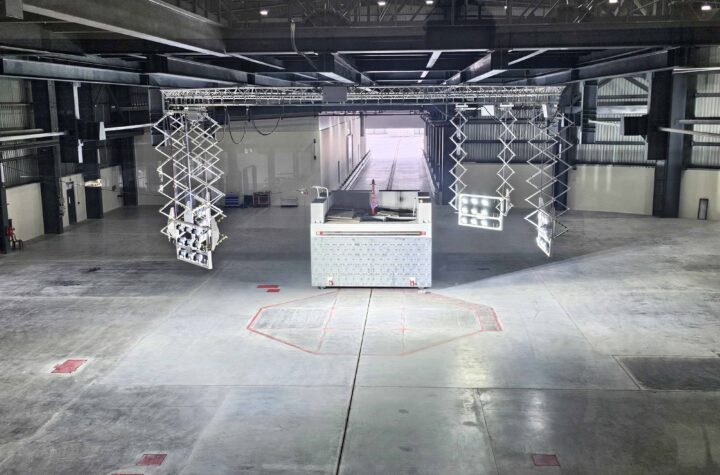
Like kids playing marbles, diesel engineers are cribbing moves from their gasoline engine rivals and vice versa. Considering the fact that both are chasing the same victory — more miles per gallon and reduced emissions — what’s a little piracy within the engine lab? Electronic controls and catalytic converters — the two greatest gas-engine advancements of the 20th century — are behind the significant strides light-duty diesels have achieved during the past five years. Now it’s payback time. Gas experts are busy improving their engines with the very features that make diesels so efficient.
Electronic controls and catalytic converters — the two greatest gas-engine advancements of the 20th century — are behind the significant strides light-duty diesels have achieved during the past five years. Now it’s payback time. Gas experts are busy improving their engines with the very features that make diesels so efficient.
Since diesels don’t use a throttle to meter intake air, they avoid the pumping losses which diminish a gasoline engine’s efficiency. Just this year, DaimlerChrysler, GM and Honda engineers began incorporating that very feature in their gas engines. Disabling half the cylinders during cruising necessitates a wider throttle opening to feed active cylinders with the air they need to maintain equivalent power. Reduced pumping losses can boost efficiency by ten or more percent.
BMW uses an alternate approach. With its Valvetronic concept, incoming air flow is regulated solely by varying the amount of intakevalve lift. Throttles are dispensed within BMW 6- and 8-cylinder gas engines to avoid the pumping losses they impose.
Squirting fuel directly into the combustion chamber — the way diesels have done it since Robert Bosch perfected the high-pressure pump 77 years ago — is another means of cutting gasoline-engine pumping losses. Direct injection yields a stratified charge: a rich mixture near the spark plug with a progressively leaner fuel-air ratio deeper in the cylinder. The overall mixture is leaner than normal, and power output is determined more by the amount of gasoline injected than the quantity of air ingested, normally a diesel characteristic. With lean mixtures, the throttle can again be cocked wider to lessen pumping losses.
A second advantage with direct gas injection comes from the cooling effect of evaporating fuel. When the phase change occurs in the combustion chamber instead of the intake ports, the result is cooler temperatures and a lower propensity for detonation. That facilitates higher compression ratios which help squeeze more work out of each increment of fuel. Direct injection also improves a gasoline engine’s appetite for recirculated exhaust gas. Dosing the fresh charge with exhaust reduces peak combustion temperatures and pressures, the preferred strategy for curbing nitrous oxide emissions.
GM estimates that direct injection can improve gas engine fuel economy by 10 percent. There are issues to be solved before it sees universal use but Audi, BMW and Isuzu have already implemented direct injection and other makers are in hot pursuit.
 |
| Gasoline engine experts are improving combustion chamber shapes and fuel delivery so higher compression ratios can be tolerated without detonation. The 605 hp Porsche Carrera V-10 boasts a compression ratio of 12:0:1. |
Higher compression is desirable in any engine because it’s the flip side of the expansion ratio. (With a few exceptions, compression and expansion ratios are identical.) Seeking larger expansion ratios, gasoline engine experts are improving combustion chamber shapes and fuel delivery so higher compression ratios can be tolerated without detonation.
Ten years ago, an 8.0:1 compression ratio was commonplace for gasoline engines versus 20:1 or more for diesels. That gap has been halved. High-performance gasoline engines, such as the Porsche Carrera GT’s 605-horsepower V-10 have hit 12.0:1 while the turbocharged diesel powering the Mercedes-Benz E320 CDI has an 18.0:1 compression ratio.
No diesel expert in a right mind would launch a new engine without a turbocharger or supercharger for maximum efficiency. Blowers have come and gone on gas engines throughout the past 40 years. Most of the Saabs currently sold in America are turbocharged. Mercedes- Benz recently announced plans to switch from superchargers to turbos for its highest performance engines. Boosters will continue trickling down to affordable gas engines because they maintain power when smaller piston displacements are implemented for improved mileage.
Another strategy attractive to both gas and diesel engineers is homogeneous charge compression ignition (HCCI). The concept is creating a mixture of fuel and air capable of spontaneous ignition at multiple points instead of at a single location. From the diesel perspective, that means mixing a portion of the fuel with air early so that, when combustion occurs on cue, it sweeps throughout the charge in an orderly manner without the pressure and temperature spikes that generate noise and emissions. From the gasoline-engine perspective, the fuel is injected directly into the chamber but with less charge stratification than is common today. The overall mixture is still lean to reap efficiency benefits but the more homogeneous mix results in lower peak temperatures and reduced opportunities for NOx pollutants to form. In the regimes where HCCI works, no spark is needed for ignition, further erasing the difference between gas and diesel.
Charles Freese, GM’s executive director for diesel engineering, acknowledges, “Anyone that’s serious about improving combustion is pursuing HCCI, including GM.” As usual, Honda is way ahead. A twostroke gasoline-fueled Honda motorcycle using HCCI principles finished seventh overall in the 1995 Baja 1000 off-road race.
So will gas or diesel ultimately prevail? The answer is both. As usual, customers will vote with their monthly installments for the engine that best suits their needs. That pits gas against diesel in a feverish battle for the lowest consumption and the cleanest exhaust at the cheapest price. With hybrids growing in popularity and fuel cells coming in 15 or so years, we’re about to witness internal combustion’s last but best days.









More Stories
Essential Features to Look for in ADAS Calibration Systems
Your Guide to Filing a Car Accident Claim
Steps to Take Immediately After a Car Accident